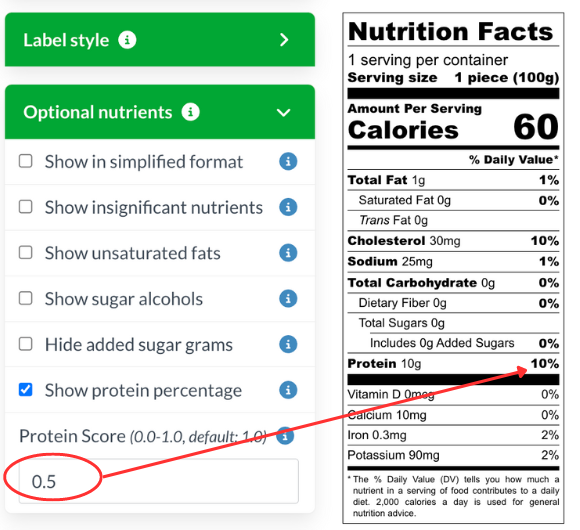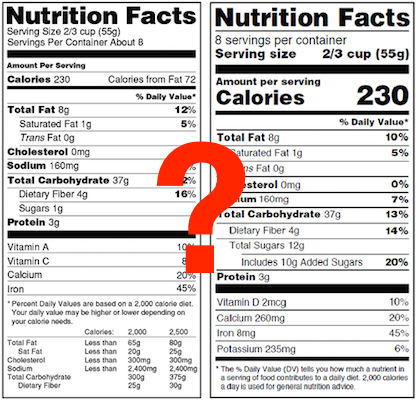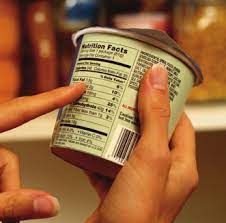How to Calculate PDCAAS
You can now enter a protein score within ReciPal! We’ve added a field on our label creation page to enter a PDCAAS score. This feature means you can create more accurate labels by factoring in the quality of the protein to adjust for its digestibility and the percent it’s actually contributing to the recommended daily value.
If you prefer to learn over video, we have a version on our YouTube Channel and embedded below:
What is a Protein Score?
PDCAAS (Protein Digestibility Corrected Amino Acid Score) is a method that rates the quality of a protein based on its amino acid profile and digestibility. The score ranges from 0.0 - 1.0 and indicates what percentage of protein is available for human protein synthesis. A score of 1 indicates that the protein meets or exceeds the essential amino acid requirements and is highly digestible. As a default, the protein score in ReciPal is set to 1, which works in many cases.
However, with the rise of plant-based proteins, adjusting this score has become more necessary. And really whenever you’re showing the % Daily Value this score should be adjusted accordingly. For example, a food with PDCAAS of .5 means only half of this protein is available for synthesis. Therefore, if there were 10 grams of protein, adjusting the Protein Score from 1.0 to 0.5 would result in the % Daily Value of protein shifting from 20% to 10%. While the label would still indicate 10 grams of protein, the % DV must show the digestible amount of protein as adjusted by the PDCAAS.
Setting PDCAAS in ReciPal
Entering the Protein Score is simple. From the Label page, select optional nutrients and choose the check box to “Show protein percentage”. Once that is enabled, you will see a Protein Score field with the default value already set to 1. Simply enter the PDCAAS score in this field.

When is Showing Protein Percentage Required?
Showing the % Daily Value of protein is often optional, however, whenever you make a protein claim (even if it’s just that your product is a source of protein), it becomes a labeling requirement. And, it is always required on product labels for infants (age 0 to 12 months) and children (age 1 to 3 years). We hope it goes without saying that whatever you put on your label needs to be accurate. Now, with the Protein Score feature, you can adjust the % Daily Value based on PDCAAS.
Calculating PDCAAS
The PDCAAS is a calculation based on the food product’s amino acid score times its protein digestibility.

You can figure this out through a lab analysis, a PDCAAS calculator, or calculate it yourself if you’re able to get access to all of the necessary information, some of which can be requested from suppliers (i.e. protein digestibility). You can also research known PDCAAS reference amounts for different types of foods when available. We’ll give a simple PDCAAS calculation example below.
Calculating PDCAAS
So we know that PDCAAS is the amino acid score multiplied by the protein digestibility. Here we'll show how to calculate PDCAAS, including how to find the weighted average for protein digestibility (in case you have multiple ingredients contributing protein).
Amino Acid Score
To figure out the amino acid score first you need to have data about the amino acids in your recipe. If you don't have this data, sometimes it can be found through the USDA Database or other online resources. From there, you divide the actual ratio of each of the essential amino acids in your recipe (mg/g protein) by their ideal ratio (based on the 1985 FAO/WHO/UNU protein report of a 2 - 5-year-old child). If there are multiple ingredients contributing to the protein of your recipe, then you'll combine the ratios of amino acids to proteins.
If all amino acids are 100% or more this means you have a complete protein and your amino acid score is 1. If not, it’s an incomplete protein and the amino acid with the lowest percent will be your limiting amino acid. That number will be used as your amino acid score to calculate PDCAAS.
For example, lets take a look at recipe where the ingredients contributing protein are sunflower seed flour and spirulina. We pulled the amino acid data of sunflower seed flour and spirulina from the USDA website. We're using 100 grams of sunflower seed flour which contains 48.1 grams of protein and 1 cup of spirulina which contains 64.4 grams of protein. So we add the total amount of each amino acid and the total amount of protein (48.1 g + 64.4 g = 112.5 grams of protein). From there we divide the mgs of each amino acid by total grams of protein (122.5 g) to determine the amino acids per gram of protein. After that, we divide the actual amino acids by the reference amount to determine the amino acid score. You can check out the spreadsheet where we calculated this data.

Since Lysine is the only amino acid below 100%, it's the limiting amino acid and 82.15% will be used as the amino acid score.
One benefit of having multiple sources of protein is that their amino acid profiles can be complementary. One protein source can be low in Lysine and high in Valine, while another can be high in Lysine and low in Valine. Individually, they may be incomplete sources of protein, but together they may balance each other out and be complete sources of protein.
Calculate Weighted Average of Protein Digestibility
For recipes that have multiple protein contributing ingredients, you need to use the weighted average of the protein digestibility. Again, protein digestibility can sometimes be provided by a supplier or researched from a reliable source online, but if you can't get this (or any other data) lab analysis may be necessary. If you have the protein digestibility data, using the Nutrition Breakdown screen in ReciPal you can see what percentage each ingredient contributes to the overall protein of the recipe. The recipe's overall protein digestibility is determined by:
Recipe Protein Digestibility = (Ingredient 1 Protein Percentage x Ingredient 1 Protein Digestibility) + (Ingredient 2 Protein Percentage x Ingredient 2 Protein Digestibility). So in this case, it's the protein percentage of sunflower seed flour times its digestibility plus the protein percentage of spirulina times its digestibility.
- Recipe Protein Digestibility = (43% x 0.93) + (57% x 0.85)
- Recipe Protein Digestibility = 0.4 + 0.48
- Recipe Protein Digestibility = 0.88
Putting It All Together
To figure out the PDCAAS you multiply the amino acid score by the recipe’s protein digestibility score (weighted average for multiple protein contributing ingredients). Lets go back to the sunflower seed flour and spirulina example where we found the Amino Acid Score to be .82 and the digestibility to be .88.
Working off our example this would be:
- PDCAAS = Amino Acid Score x Protein Digestibility
- PDCAAS = 0.82 x 0.88
- PDCAAS = 0.72
In this example, inputting the PDCAAS in ReciPal would adjust the 10g of protein from 20 % Daily Value to 14% Daily Value.
While it can be a little complicated to calculate the PDCAAS yourself, it couldn't be simpler to make this adjustment within ReciPal. Once you know your PDCAAS, just enter that number in the Protein Score field and the % Daily Value of protein will automatically adjust.






